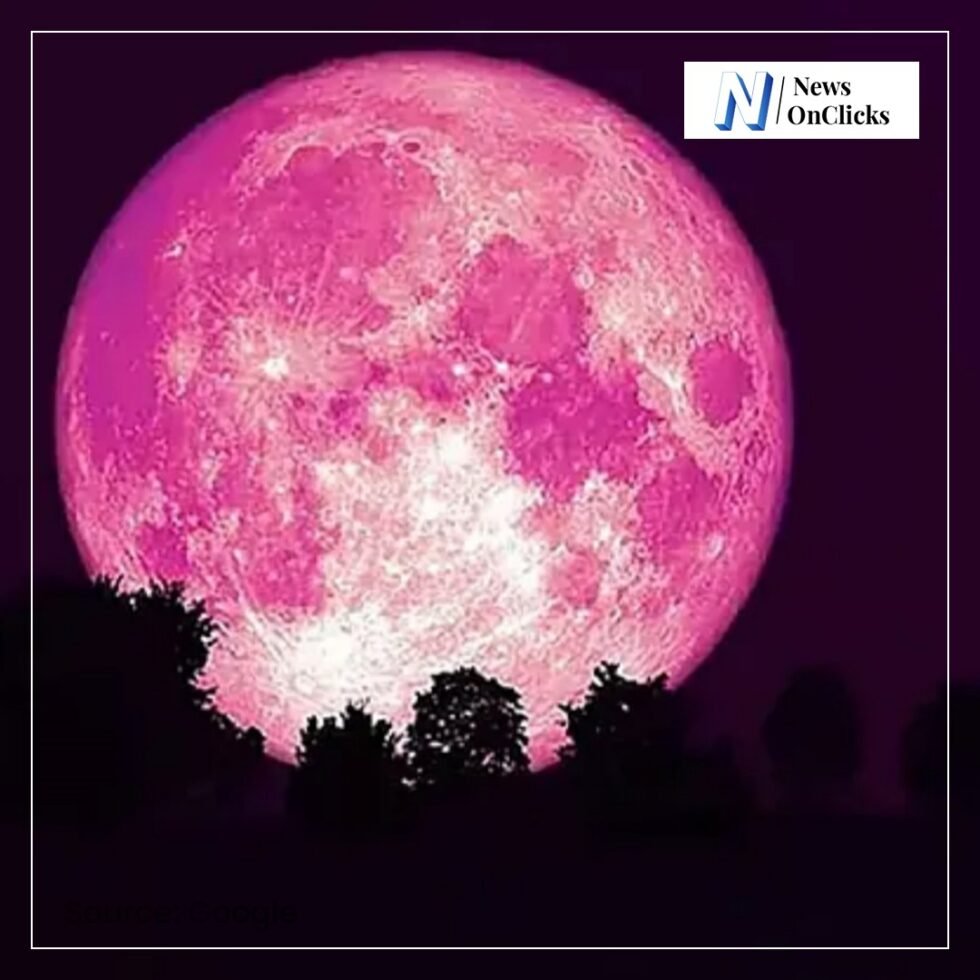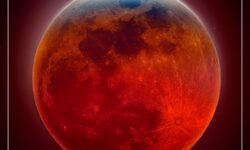
If you’re a moon lover or simply looking for a magical night sky moment this June, you’re in for something extraordinary. The 2025 Strawberry Moon—set to rise on the evening of June 11—won’t just be another full moon. It’s the lowest-hanging full moon since 2006, and its name is more than poetic—it might actually appear reddish-pink on the horizon.
This year’s Strawberry Moon is taking things to the next level with a rare orbital phenomenon and a bonus cosmic companion—the bright red star Antares, visible close to the moon on the same night. Whether you’re an astronomer or a casual skywatcher, this moonrise promises to be a moment worth staying up late for.
What Is a Strawberry Moon? The Meaning Behind the Name
Contrary to what some might think, the Strawberry Moon isn’t named after its color or any moon-related phenomenon. The name originates from Native American tribes, particularly the Algonquin people, who used full moons as markers for seasonal events.
June’s full moon signaled the brief window of time when wild strawberries ripened in the northeastern U.S. It became known as the “Strawberry Moon,” a tradition that was later adopted by The Old Farmer’s Almanac and remains in use today.
Each of the twelve full moons has a name rooted in agriculture, climate, or wildlife. For example:
- January: Wolf Moon
- April: Pink Moon (named after a blooming wildflower)
- September: Harvest Moon
These names helped communities track the passing of seasons, long before modern calendars.
When to See the Strawberry Moon in 2025 (UK & Global Times)?
The 2025 Strawberry Moon will officially reach its fullest point at 8:43 am BST on June 11—but there’s a catch: it’ll be below the horizon at that moment for UK viewers.
Don’t worry, though. You’ll still catch it at its most stunning when it rises just after 10:20 pm on June 11 in the southern night sky.
In fact, astronomers suggest the best viewing time will be just before moonset—around 4:00 am on June 11—when the moon is 99.7% illuminated and sitting low on the horizon, glowing in shades of orange and red.
Quick Tip: Use a clear southern horizon and binoculars for an even more dramatic moonrise experience.
Why This Year’s Strawberry Moon Is So Special: The ‘Lunar Standstill’
In 2025, the Strawberry Moon isn’t just visually captivating—it’s astronomically significant.
This year marks what’s called a “lunar standstill”—a rare event that occurs every 18.6 years. During this time, the tilt of the Moon’s orbit reaches its maximum angle with respect to Earth’s equator. This causes both:
- The lowest full moon in the summer
- And the highest full moon in the winter
“This year is even more extreme as we’ve reached a lunar standstill,” says Imo Bell, astronomer at the Royal Observatory Greenwich. “It results in the lowest full moon since 2006.”
In simple terms, when the Sun is at its highest in the sky (summer solstice period), the full Moon sits extra low. That’s why the June 2025 full moon will barely rise above the horizon—a stunning sight for stargazers.
Why It Might Actually Look Like a Strawberry?
Thanks to atmospheric effects, the Strawberry Moon could appear reddish or pinkish as it rises or sets. This isn’t due to the Moon’s surface color, but because of the scattering of sunlight through Earth’s atmosphere—similar to the science behind red sunsets.
Shorter blue and violet wavelengths are filtered out, allowing longer red and orange wavelengths to dominate, especially when the moon is close to the horizon.
“The moon may appear reddish due to the scattering of the sun’s light,” explains Bell. “It’s the same effect that causes sunsets to appear red.”
If you’re lucky, you’ll witness a large, orange-pink moon floating low in the sky—an illusion enhanced by its position near the horizon, making it appear bigger than usual.
Look Out for Antares—The Moon’s Red Companion
This year’s lunar show comes with a celestial sidekick: the red supergiant star Antares, one of the brightest stars in the night sky and a prominent feature of the constellation Scorpius.
On the night of June 10 and into June 11, Antares will appear close to the full moon, creating a striking visual pairing in the southern sky.
Antares is often mistaken for Mars due to its color and brightness. In fact, its name means “rival of Mars” in Ancient Greek. When seen near the reddish Strawberry Moon, the pair will form a warm-hued duet worth photographing.
Pro tip for photographers: A zoom lens or telescope-mounted camera will give you crystal-clear shots of the Moon and Antares together.
Is the Strawberry Moon Rare?
While a Strawberry Moon occurs every June, what makes this one especially rare is the combination of factors:
- Lowest full moon in 19 years due to lunar standstill
- Possible pinkish hue caused by low horizon position
- Close appearance of Antares, adding extra flair
- Coincides with longest daylight hours of the year, limiting its visibility window to night owls and early risers
In short, a Strawberry Moon of this kind won’t happen again until the next lunar standstill in 2044—so it’s a once-in-a-generation celestial event.
How to Prepare for Moon Viewing?
To make the most of this event, here are a few easy stargazing tips:
- Check local moonrise times: Use free apps like SkyView, Stellarium, or TimeandDate.
- Pick a dark-sky location: Head away from city lights for the best contrast.
- Bring binoculars or a telescope: Especially helpful for spotting Antares.
- Arrive early: The moon rises fast, and you don’t want to miss its ascent.
- Use a tripod for photography: A stable setup is key for sharp images of a low-hanging moon.
Final Thoughts: A Sweet Start to Summer Nights
This year’s Strawberry Moon is more than a poetic name—it’s a visual and scientific spectacle rolled into one. From its rosy glow and unusually low path across the sky, to its pairing with the fiery Antares, June 11, 2025, promises to deliver one of the most memorable full moon experiences in nearly two decades.
Whether you’re viewing from your backyard, a rooftop, or a countryside field, take a few moments to pause, look up, and enjoy this rare lunar alignment. It’s the kind of skywatching magic that doesn’t come around often—and no telescope is needed to appreciate its simple, celestial beauty.









